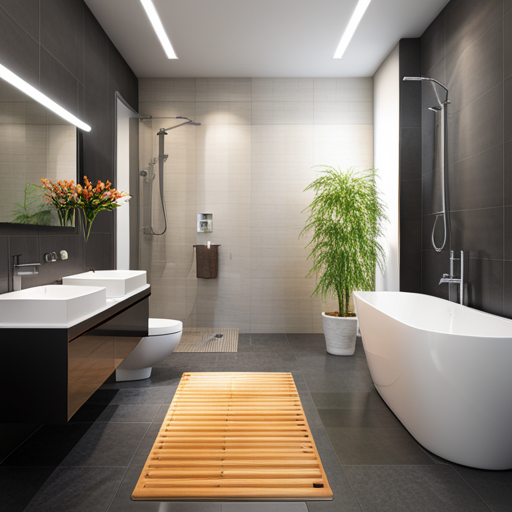This article explores the causes of mold on bamboo and provides insights into preventing and treating this issue. It emphasizes the importance of good water management, moisture supply, and soil drainage for maintaining the health of bamboo. Additionally, planting bamboo in a location with bright sunlight is highlighted as a way to promote its vigor and overall well-being.
Different types of molds that can affect bamboo are discussed, including surface molds, stain fungi, and decay fungi. While some molds only discolor the surface without significantly impacting the strength of bamboo, decay fungi can cause severe damage if not detected early on.
The article also delves into cleaning and maintaining bamboo to prevent mold growth. It suggests various products, such as Mold Armor FG502, vinegar, or lemon oil, that can be used to clean mold off bamboo.
By understanding the causes of mold on bamboo and implementing proper cleaning and maintenance practices, individuals can ensure the longevity and health of their bamboo products.
Contents
- 1 Our Highlighted Points
- 2 What Causes Mold?
- 3 Preventing and Treating Mold
- 4 Cleaning and Maintaining Bamboo
- 5 Can mold affect the taste of bamboo?
- 6 Frequently Asked Questions
- 6.1 How can I tell if my bamboo plant has mold or fungal spots?
- 6.2 Can mold on bamboo be harmful to humans?
- 6.3 What are some common signs of root rot in bamboo plants?
- 6.4 Are there any natural remedies for treating mold on bamboo?
- 6.5 Is it possible to prevent mold growth on bamboo products without using chemicals?
Our Highlighted Points
- Good water management, moisture supply, and soil drainage are important for the health of bamboo plants.
- Mold and fungi can affect bamboo plants and should be treated early.
- Different bamboo species are treated differently to prevent mold.
What Causes Mold?

Mold on bamboo is caused by factors such as carbohydrates, moisture content, and oxygen, which can lead to the growth of fungi and mold. Common mold prevention methods include maintaining good water management, ensuring proper moisture supply and soil drainage, and planting bamboo in locations with bright sunlight.
Discolorations and spots on bamboo can indicate a problem, and it is important to identify different types of bamboo mold. Surface molds can easily be wiped off and do not affect the strength of bamboo. Stain fungi may discolor the surface of bamboo but do not significantly affect its strength. Decay fungi, however, can cause severe damage to bamboo and can be difficult to detect early on.
Understanding the causes of mold on bamboo and implementing appropriate prevention methods is essential to maintain the health and integrity of bamboo plants and products.
Preventing and Treating Mold

Preventive measures and timely treatment are important for maintaining the health and integrity of bamboo plants and products, particularly in relation to the growth of fungi and unwanted microbial organisms.
To prevent mold on bamboo, it is essential to keep the plants well-watered but not overwatered, ensuring good drainage and avoiding water stagnation. Additionally, providing adequate sunlight and ventilation can help inhibit mold growth.
If mold stains appear on bamboo surfaces, they can be removed using natural remedies such as vinegar or lemon oil. These substances have antimicrobial properties and can effectively eliminate mold. It is important to thoroughly clean and dry the affected areas to prevent further mold growth.
Regularly inspecting bamboo plants and products for signs of mold and promptly addressing any issues can help maintain their longevity and aesthetic appeal.
Cleaning and Maintaining Bamboo

Regular cleaning and proper maintenance are essential for preserving the quality and appearance of bamboo plants and products.
When it comes to removing mold from bamboo furniture, there are a few effective methods to consider. Firstly, you can use products specifically designed for mold removal, such as Mold Armor FG502. Alternatively, natural remedies like vinegar or lemon oil can be used to clean and disinfect the affected areas. It is important to thoroughly dry the furniture after cleaning to prevent any residual moisture that could contribute to mold growth.
To prevent mold from forming on bamboo products, there are a few tips to keep in mind. Firstly, avoid placing the bamboo in areas with high humidity or excessive moisture. Regularly inspect the products for any signs of mold or discoloration, and promptly address any issues. Applying a wax sealant or polyurethane coating can also provide an additional layer of protection against mold growth.
Can mold affect the taste of bamboo?
Mold can significantly alter the tasting bamboo flavor profile. The presence of mold can introduce unpleasant off-flavors and odors to bamboo, affecting its overall taste. This can result in an undesirable and musty flavor, diminishing the natural bamboo essence. It’s important to prevent mold growth to maintain the authentic bamboo flavor profile.
Frequently Asked Questions
How can I tell if my bamboo plant has mold or fungal spots?
Signs of fungal infection in bamboo plants include discolorations, spots, and rust-like fungal spots on older plants in humid climates. To prevent mold growth, ensure good water management, soil drainage, and plant bamboo in a location with bright sunlight.
Can mold on bamboo be harmful to humans?
Mold on bamboo can be harmful to humans as it can release spores that may cause respiratory issues, allergies, and other health problems. However, mold on bamboo is not necessarily a sign of poor air quality.
What are some common signs of root rot in bamboo plants?
Signs of root rot in bamboo plants include yellowing or wilting leaves, stunted growth, and soft or mushy roots. To prevent root rot, ensure good water management, proper soil drainage, and avoid overwatering.
Are there any natural remedies for treating mold on bamboo?
Natural remedies for preventing mold on bamboo include proper water management, sunlight exposure, and soil drainage. To remove mold from bamboo, products like Mold Armor FG502, vinegar, or lemon oil can be effective.
Is it possible to prevent mold growth on bamboo products without using chemicals?
Prevention methods for mold growth on bamboo products without using chemicals include ensuring proper air circulation, regular cleaning and drying, and using eco-friendly alternatives like vinegar or lemon juice for cleaning and mold prevention.

